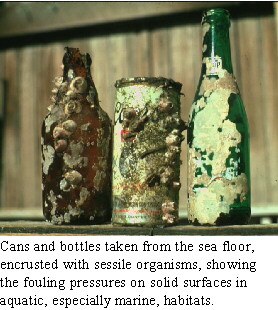
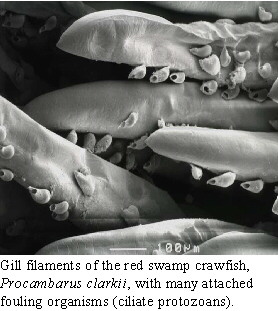


One of the most interesting types of research, in my opinion, is to determine how some structure of an organism works and how it might have evolved in the ancestor of the organisms under study. In crustaceans, this involves using a mix of anatomy, microscopy, behavioral observations, and experiments to test hypotheses about the adaptive value of a structure. Much of my work in this area has centered on "antifouling" mechanisms, i.e., structures and behaviors that help to keep a crustacean clean. Clean from what? Aquatic environments are "dirty" slightly to highly turbid with suspended particles of sediment and organic debris. There are many kinds of microbial organisms, such as bacteria, fungi, sessile protozoans, microscopic algae, as well as bigger fouling organisms, that need a solid surface to settle and grow on. The hard non-living exoskeletons of crustaceans like shrimps are such an attractive surface. The fouling of the shrimp body by aquatic "dirt" and fouling organisms can interfere with gill function (respiration, excretion), olfaction ("sense of smell"), and locomotion. In an aquatic organism, heavy fouling on its exterior would interfere with swimming just as barnacle fouling on the bottom of a ship makes its movement through the water inefficient.
Shrimps, as well as other decapod crustacean species, spend much time in grooming or brushing the body. Some appendages have brushes and combs of setae (hairs) specialized for grooming. Sensory and respiratory structures (e.g., antennae and gills) are always cleaned in some way. Many decapod crustaceans, especially caridean and stenopodid shrimps, keep incubated embryos meticulously clean. Figured below are some illustrations of shrimps engaged in cleaning behaviors, as well as some of the structures used to clean the body.
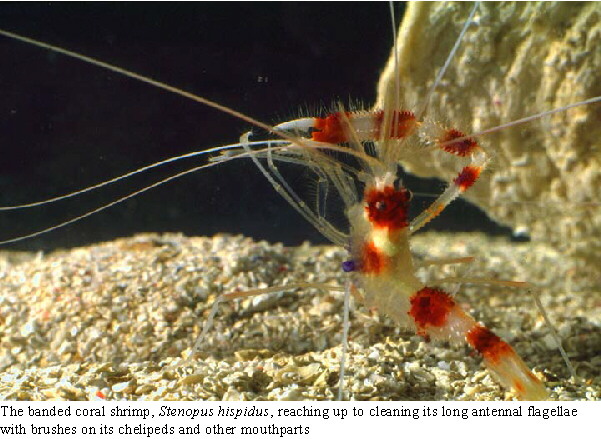
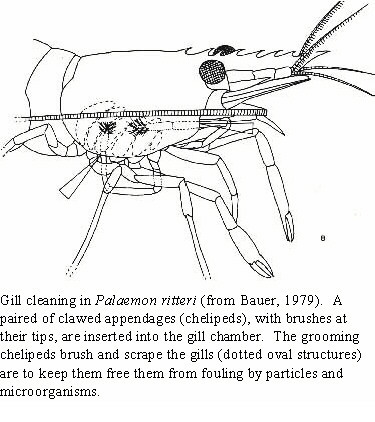
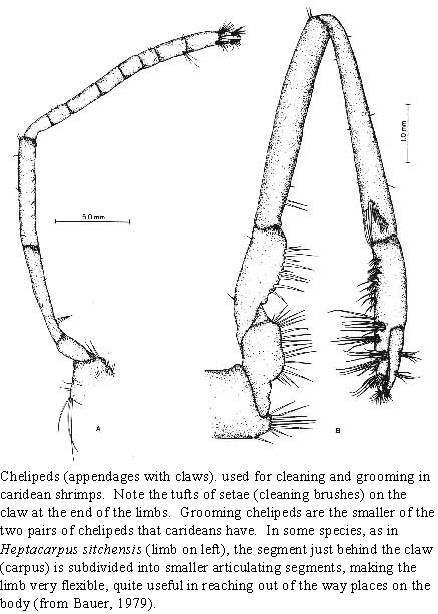
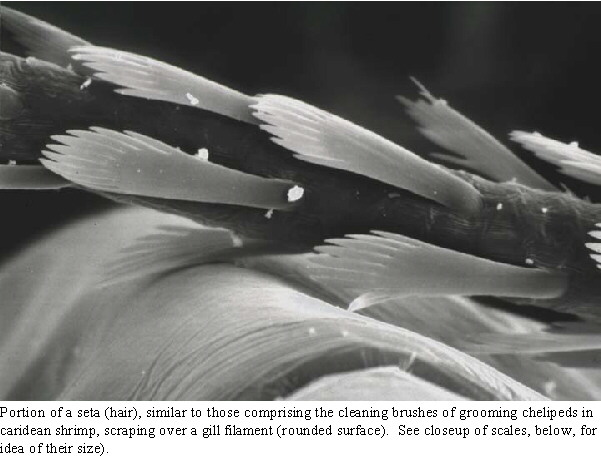
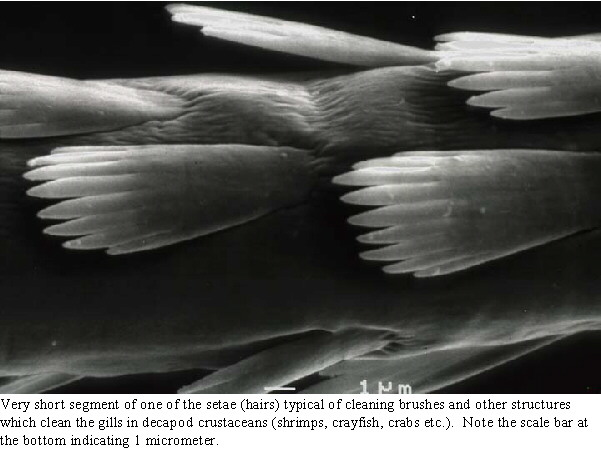
Experiments in which cleaning mechanisms are disabled are quite useful in revealing the types of fouling which they may be preventing |
|---|
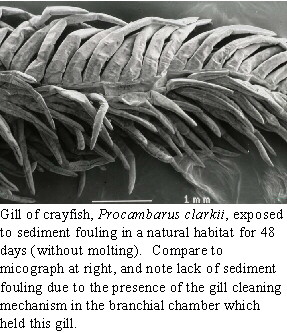
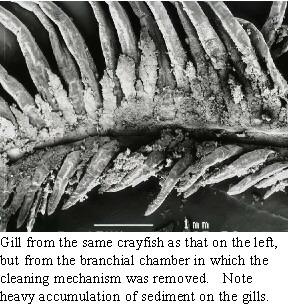
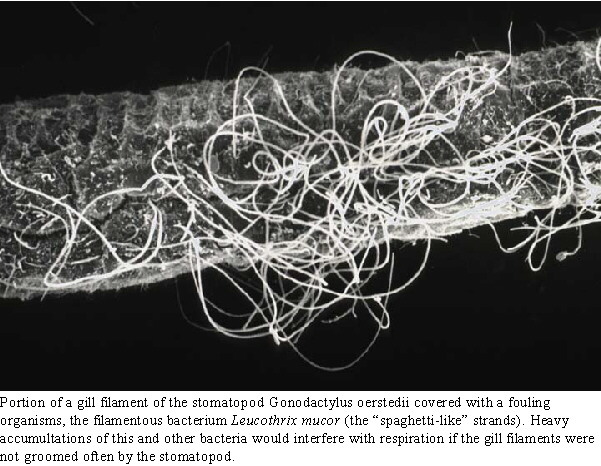
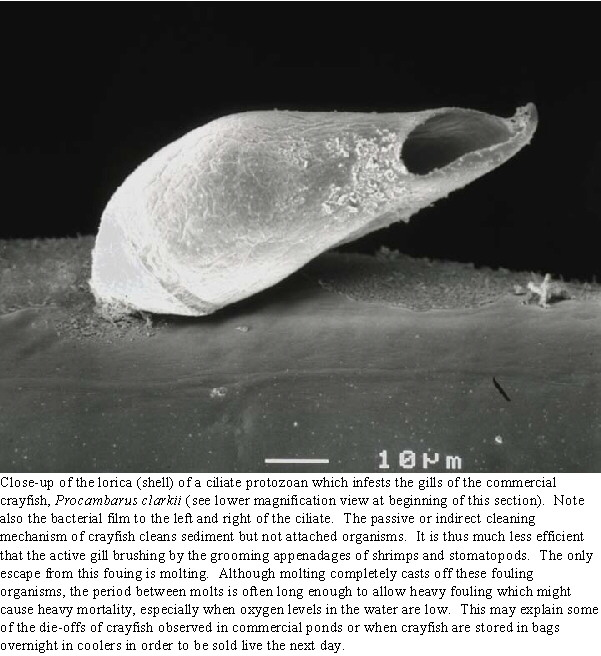
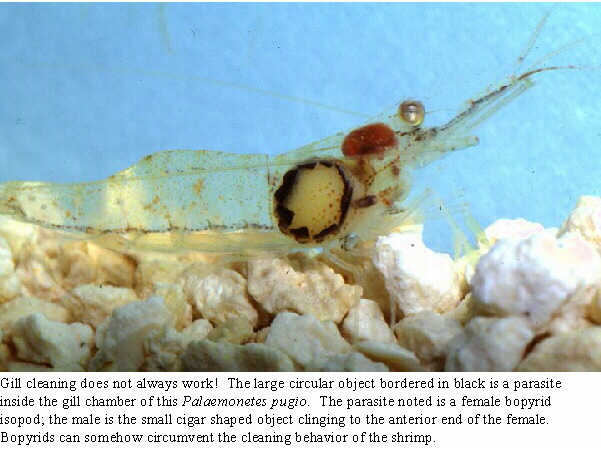
These experiments and studies have not only revealed much about the fouling pressures acting on marine crustaceans but also about the evolutionary pathways by which different antifouling mechanisms have evolved (see Bauer, 1998; Bauer, 1981, 1989a, 2013 for references and reviews).
Back to Home Page